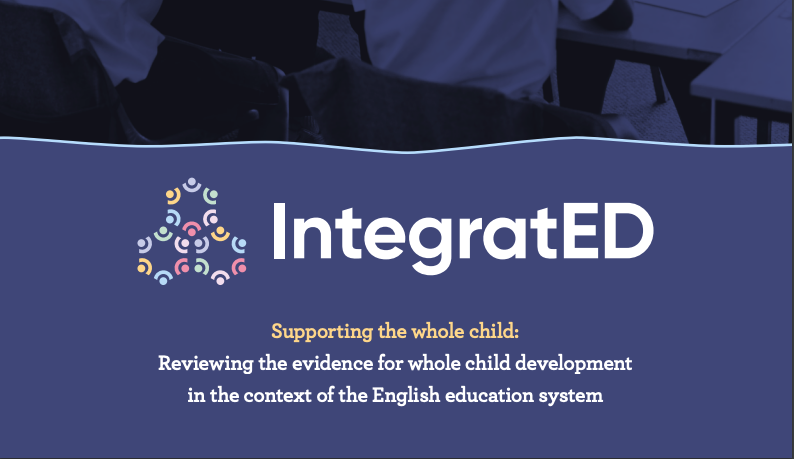
Alternative provision may sometimes be the right choice for a child, but the data around this is poor. The Department for Education should publish all moves from mainstream to AP - not just permanent exclusions, argue Alice Wilcock and Cath Murray of the Centre for Social Justice
While school exclusions data is published each year, there is no official data published on pupil movement out of mainstream schools and into alternative provision (AP) when it happens without a permanent exclusion.[1]
Last year Education Policy Institute (EPI) published an in-depth analysis into what they have termed “unexplained exits” from mainstream schools (exits that are likely not to have been the family’s choice). EPI has since shared with the Centre for Social Justice the total number of pupils from the 2012-2017 cohort of secondary school children who experienced an unexplained exit to AP. This measure is the closest we have to any estimate of number of off-rolled pupils.
EPI figures reveal that 5,589 pupils in the 2017 cohort experienced an unexplained exit to AP while 4,639 pupils experienced a permanent exclusion.
Normally, permanent exclusion figures are reported as a total for a given year. However, EPI’s analysis was focused instead on a single cohort of pupils throughout their secondary education. To compare the data on unexplained exits to AP and permanent exclusions, we constructed a similar measure of permanent exclusions for the cohort of pupils who sat their GCSEs in 2017.[2]
Plotting permanent exclusions against unexplained exits to AP reveals a slight negative correlation between the two: some local authorities who officially have very low permanent exclusion rates have a high rate of unexplained exits to AP. This trend is by no means clear cut, in fact, the relationship is only slight and is insignificant.
As we can see, most areas have low rates of both permanent
exclusions and unexplained exits to AP. However, the below graph exposes 33
(one in five) local authorities that record below average permanent exclusions
for the 2017 cohort but have above average rates of unexplained exits to AP.
At the extreme end, Knowsley records only 2.03 permanent exclusions per 1,000 pupils, yet 83.25 pupils per 1,000 experienced an unexplained exit to AP. Similarly, Islington records 16.49 permanent exclusions per 1,000, but their unexplained exit rate comes in at 71.24 pupils per 1,000. Looking at only the official recorded permanent exclusions for these areas masks the true scale of pupil movement.
It is important that we incorporate the analysis of unexplained exits to AP into our discussions of permanent exclusions. Overall, the relative proportion of pupils entering AP through either an unexplained exit or a permanent exclusion is small. However, on all measures, the rate of unexplained exits to AP is considerably higher than the rate of permanent exclusions. While only 8.99 pupils per 1,000 on average experienced a permanent exclusion, 12.69 pupils per 1,000 experienced an unexplained exit to AP.
This analysis takes us much further and provides a more comprehensive picture of pupil movement into AP, but there are some inherent limitations in using the unexplained exits to AP measure.
This measure captures all moves to AP, both state-maintained and other forms, however, the AP Census that collects data on all other AP is only collected once a year, so it only captures a third of all moves to non-state-maintained AP. If a pupil is moved to a non-state-maintained AP after January but spends less than a year in that provision, their movement is not recorded on any census.
A more troubling limitation, however, is that this AP Census is also incredibly opaque: not everything on the AP Census is strictly AP, and no official truly knows how much of the census would qualify as AP. Education DataLab estimates that nearly 4 in 5 pupils recorded on the AP Census are attending non-maintained special schools, rather than AP.
While these limitations provide reason to be cautious, using the unexplained exits to AP measure derived from EPI’s work allows us to conduct a more refined preliminary analysis into pupil movement into AP.
Towards a combined measure
While the government publishes only exclusion rates, the incentive to find unofficial routes into full-time education in AP will continue to exist. Arguably, the pupils who are effectively excluded through "managed moves” into AP are at greater risk as they are not afforded any official scrutiny and do not have a similar appeals process to aid their reintegration into mainstream.
While it is undoubtedly true that most school leaders are doing their best to balance the needs of all the children in their care, school leaders operate under immense pressure. One of those pressures in recent years has come from the media, campaigners and various politicians to reduce school exclusions. Given the dire outcomes for children excluded from school, this is a laudable aim. However, a perverse consequence can also be that practices are simply driven underground.
Hiding the true picture of what is happening with school exclusions is in the best interests of nobody. It is much harder to make good policy if the facts are obscured.
We believe that the government should remove any incentive to hide pupil movement, by publishing alongside its exclusion rates, a combined measure that accounts for all moves into AP.
We have mocked this up using the cohort data that we have obtained.
Looking at the overall ranking bar-chart, it is clear that the inclusion of unexplained exits to AP data considerably changes the results, pushing some local authorities with low permanent exclusions to the top of the table for their overall pupil movement.
Conclusion and recommendations
We recommend that the government close this data loophole by publishing data on all moves from mainstream to AP alongside the figures on permanent exclusions, by local authority, in their annual exclusions statistical release.
The aim of this proposed measure is not to penalise schools or local authorities, but to provide an accurate starting point for a conversation about how to structure an education system that works well for all children. At CSJ we are currently agnostic about whether a “managed move” into AP is better for a child than a permanent exclusion (the IntegratED programme is currently conducting research into this); our complaint about the practice is that it lacks transparency.
While we believe it is necessary, publishing accurate data is only one small part of improving outcomes for excluded children. In tandem with what sometimes feels like a game of whack-a-mole with statistics and league tables, we need to focus on genuinely improving education for children removed from mainstream.
That is why the IntegratED programme is running interventions in schools and APs across England, to test what works for children at risk of exclusion and those who have been excluded from school. And it's why the CSJ is researching what quality education looks like in AP, and how government policy can support that.
[1] There is some debate over whether it is acceptable to move children permanently onto the roll of an AP if they have not been permanently excluded from school. Ofsted recently sanctioned a school for doing so, even though it admitted that the children were well cared for in AP and achieved good results. Ofsted tends to consider such moves as “off-rolling”, which they define as “the practice of removing a pupil from the school roll without using a permanent exclusion, when the removal is primarily in the best interests of the school, rather than the best interests of the pupil. This includes pressuring a parent to remove their child from the school roll”.
[2] Using a cohort measure, rather than an annual measure of pupil movement, changes the analysis slightly, as we are using data that goes as far back as 2013, and may no longer reflect local authority practice. However, to be consistent with the EPI analysis, we have had to base most of our analysis for this piece around the 2017 cohort.



